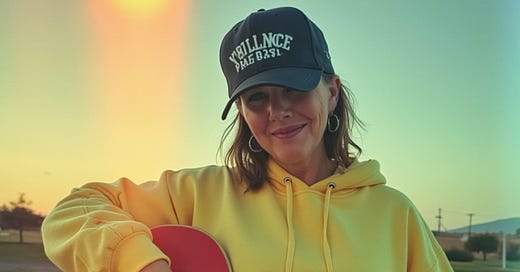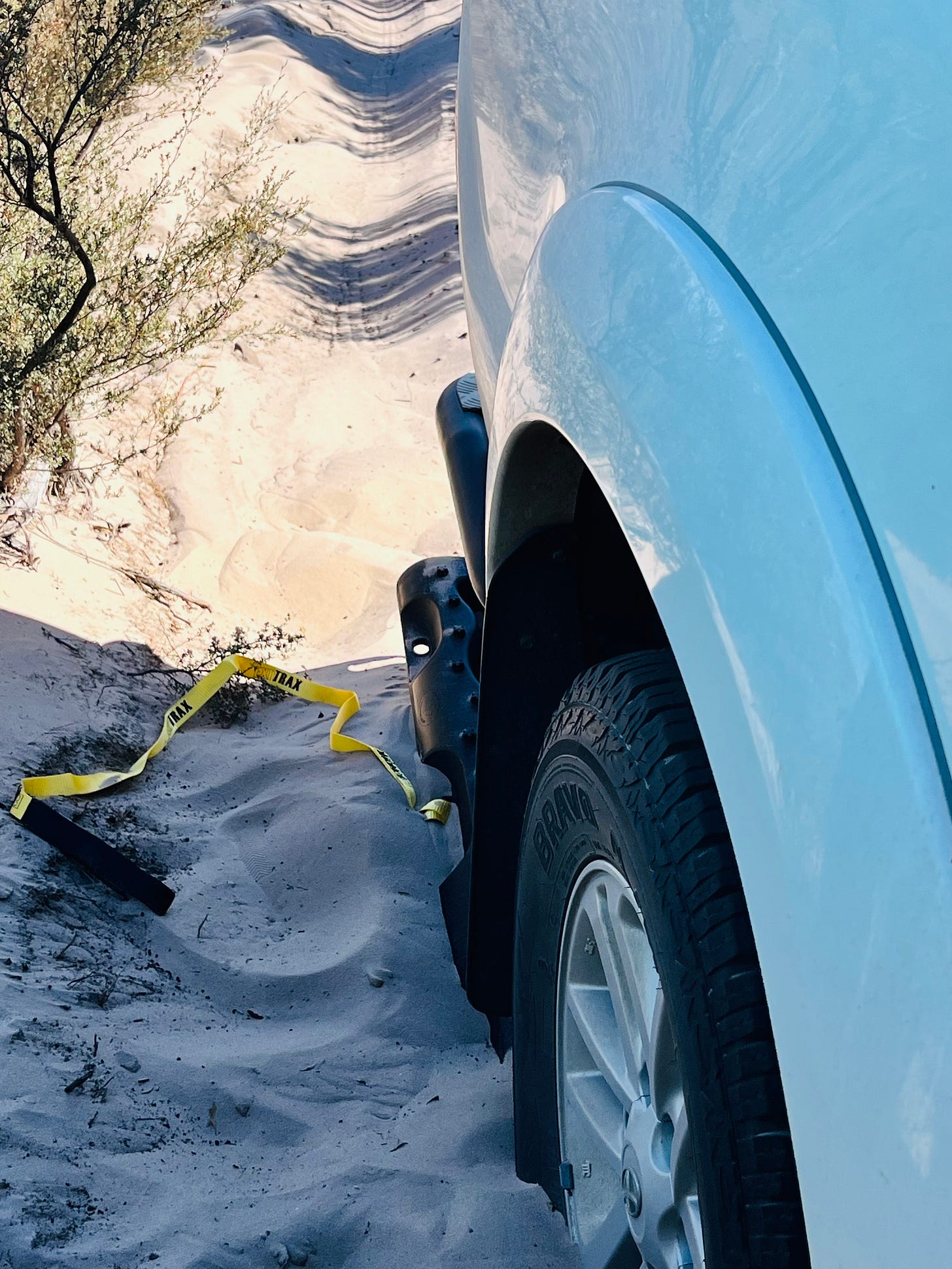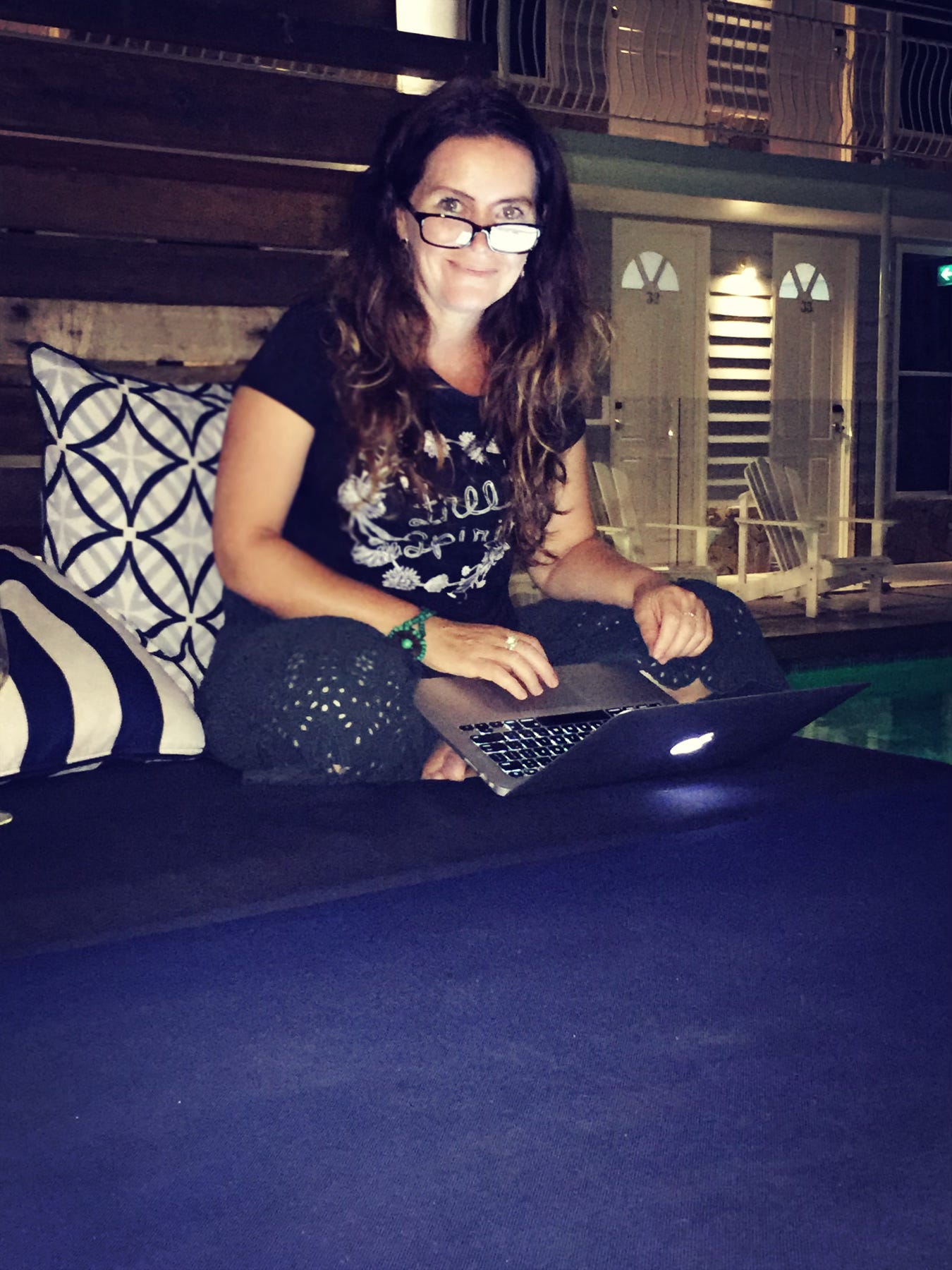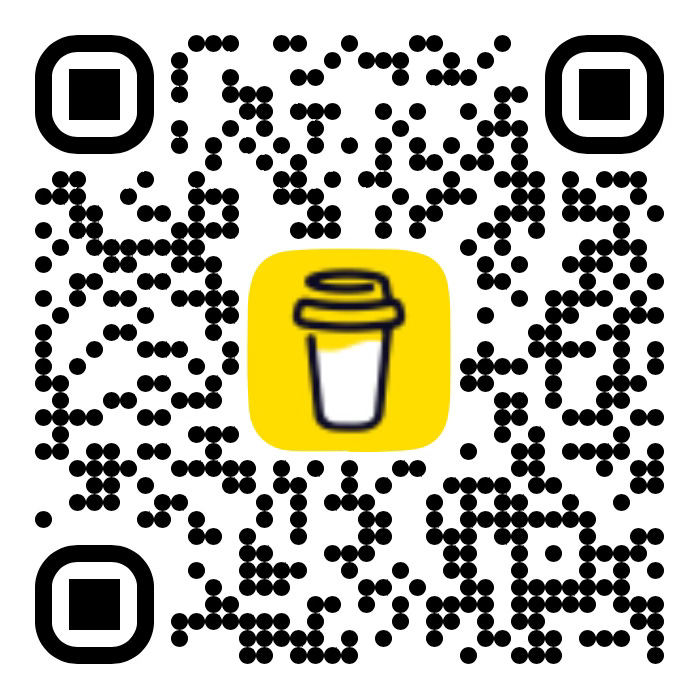WARNING: Includes content on suicide, family violence and abuse
It’s been an interesting few years.
It never ceases to astound me, how silent human beings can be. Knowing harm is a risk and harm will occur, while telling themselves, they are not part of the problem.
Ask yourself -
Q. Are you someone, who would drive straight past a stranded person? Would you stop? Go for help? What would you do?
Thousands will not stop.
I was stranded on the side of a remote highway, with a child on chemotherapy and sitting in the wheelchair (attempting to clear access to the spare tyre).
Clearly the tyre was flat and my son was on palliative care. I counted over 50 vehicles, before tourist in a motor home stopped. Neither exited their vehicle (a woman, with an upset child with no hair in a wheelchair, stranded with a flat tyre!). They inquired if I was OK and while “couldn’t help”, offered to drive to the next town and let someone know. I was just grateful someone stopped, it was getting late.
Why do humans not speak up or do their jobs, stand up in the playground when friends are knowingly at risk of harm?
These questions, have raised their ugly faces for sometime, repeatedly.
As a human rights advocate, staying silent about things which matter is not something that sits in any space in this body or in my resource kit.
I’m the first in a group of friends, to call out bullshit.
I’m the first in a workplace, to speak up about breaches to legislation, to unsafe practices, to bullying.
I’m the first in the family, to say what no one else wants to say, thinks of saying, holds in or down.
On one occasion, I spoke up in a Court room the moment I heard a lie in evidence and I knew, there at that moment, was a turning point in my career.
It doesn’t interest me to analyse why I won’t stay silent or participate in lying, manipulating systems, abusing others or preying on vulnerability of individuals. These events say less about me than they do about those who participate in cultures of secrecy and reinforce some of societies most harmful behaviours.
In the early hours of March 13, 1964, Kitty Genovese, a 28-year-old woman, was attacked outside her apartment in Queens, New York. She was stabbed, screamed for help, and reportedly the attack lasted over 30 minutes, with the attacker returning after initially fleeing.
The original news report by The New York Times claimed that 38 people witnessed or heard the attack, yet none intervened or called the police until it was too late. Kitty died from her injuries.
Later investigations showed the situation was more complex: some neighbors did try to help or were unsure what was happening. Still, the central theme of inaction stuck—and for good reason.
The case became a landmark in social psychology, giving rise to the concept of the:
Bystander Effect
A phenomenon where individuals are less likely to offer help to a victim when other people are present.
This occurs due to:
Diffusion of responsibility ("Someone else will help.")
Social cues (If no one reacts, people assume help isn’t needed.)
Fear or uncertainty (Not knowing what to do or fearing harm.)
Understanding why people do not respond to cries of help, react in workplaces to cultures of bullying and toxicity, to risk of harm to children; why family members and society stay quiet when aware of family violence, is a key to changing behaviours causing harm.
It helps us understand why people freeze or stay silent in moments of crisis—not always from malice, but from psychology.
It's taught in schools, law enforcement, and bystander intervention programs to combat apathy and encourage action.
It reminds us that doing nothing has consequences—silence can be deadly.
I’ve never been on the side of the fence, where fear thrives indecision or ever afraid of seeing my face in a mirror. I have never stayed silent about things that matter, when it comes to safety and human rights.
I like this part of myself and I won’t be bullied by any person, into ignoring risk of harm to others.
If I can’t use my verbal voice, I write.
Yet here I am, a curious wanderer, down a very toxic web of entangled human behaviours; exploring those who ignore risk, staying silent about harm. Maybe it’s to make sense of my own experience?
What makes a colleague stay silent, as a group incinerate another’s career with lying, in an attempt to bully them from the workplace for raising concerns?
What makes a group of males protect a ‘mate’, while watching on, as a teen is sexually assaulted?
How does a family, a parent or professional, ignore the words of a child, in 1 of nearly 30 attempts to tell someone of what is happening to them, before they are believed?
What type of professional does it take, to fail to mandatory report? To ignore a parent’s rights to information?
When family violence victims repeatedly raise the alarm, how does society miss all the prevention signs, resulting in the tragic loss of life?
What motivates individuals to stay silent in the face of harm?
I am curious - Who is the human being who ignores the please of others?
People often don’t speak up when someone is being hurt, as evidence suggests, not because they don’t care, but because of psychological, social, and emotional barriers.
Human survival is a powerful force and drives self-preservation.
What can we do, to learn more about those who could prevent harm, to actually reduce harm in the future?
As a parent, I’ve raised my children with the understanding to not look the other way.
This doesn’t mean putting yourself at risk.
Go get help, make a phone call, call Police, tell your Supervisor, do something - don’t look away.
Why do people ignore harm to others?
1. The Bystander Effect
When others are present, people are less likely to act because they assume someone else will.
Everyone’s waiting for someone else to intervene.
The more people watching, the more responsibility feels diffused.
2. Fear of Retaliation
“If I speak up, I might become the next target.”
Fear of being bullied themselves.
Worry about social consequences, especially in group settings like school or work.
3. Uncertainty or Doubt
“Is this really bullying?” or “Maybe it’s just a joke…”
People might not recognize subtle bullying.
They may doubt their judgment or fear overreacting.
4. Social Pressure or Group Dynamics
“Everyone else is laughing or staying quiet—maybe I should too.”
Pressure to conform or not go against the group.
Fear of being labeled as “too sensitive” or a “snitch.”
5. Lack of Skills or Confidence
“I want to help, but I don’t know what to say.”
People freeze or panic, unsure of how to intervene safely.
Many aren’t taught assertive or supportive ways to step in.
What Helps People Speak Up:
Being taught bystander intervention strategies.
Feeling emotionally safe and supported.
Seeing others model speaking up.
Knowing their voice can make a difference.
Are you part of the problem?
Behavior that goes unpunished or gets rewarded tends to be repeated, accordingly to B.F. Skinner.
When abuse occurs and no one intervenes, the abuser experiences no negative consequences.
This reinforces the abusive behavior, making it more likely to happen again.
Silence acts as passive reinforcement—a kind of permission.
How many lives will it take to speak up?
Khouloud Bakour Hawatt – Sydney, 2024
In December 2024, Khouloud Bakour Hawatt was allegedly murdered by her husband, Talaat Hawatt, with a homemade spear in their Belmore home. Despite a history of domestic violence and a previously issued Apprehended Domestic Violence Order (ADVO), which was later lifted, neighbors reported frequent disturbances but did not intervene. This case illustrates how community silence and systemic failures can contribute to tragic outcomes
Adelaide Woman Attacked with Glass Bottle, 2025
In January 2025, a homeless woman in Adelaide was assaulted with a glass bottle while sleeping outside a medical center.The attacker and a bystander, who filmed the incident, were heard laughing as they fled. The woman screamed for help, but no immediate assistance was provided. The next morning, the medical clinic contacted the police, but the woman had already left the area. This incident highlights how bystander apathy and failure to act can exacerbate the suffering of vulnerable individuals
Shawn Marsh Attempted Murder Case (Goulburn, NSW, 2023)
In May 2023, Shawn Marsh attempted to murder his ex-wife, Kylie Marsh, and her friend by intentionally crashing into their vehicle after months of stalking and domestic violence following their separation. He had sent a disturbing letter to Ms. Marsh’s daughter detailing his intentions. The premeditated nature of the attack and prior threats indicate that warning signs were present, yet the violent act was not prevented.
Clarke Family Murders (Queensland, 2020)
In February 2020, Rowan Baxter murdered his estranged wife, Hannah Clarke, and their three children by setting their car on fire in Camp Hill, Brisbane. Baxter had a documented history of domestic violence, including breaches of a domestic violence order (DVO) and controlling behaviors. Despite these red flags, interventions failed to prevent the tragedy. The case prompted national outrage and led to increased awareness about coercive control and the dangers faced by women and children during separation from abusive partners.
Farquharson Murders - (Victoria, 2005)
In Victoria, Robert Farquharson, who was convicted of murdering his three sons—Jai (10), Tyler (7), and Bailey (2)—by deliberately driving his car into a dam near Winchelsea on Father’s Day, 2005.
What Was Known Before the Tragedy?
A friend, Greg King, testified that Farquharson had expressed intentions to harm his children as a means to exact revenge on his ex-wife, Cindy Gambino. King claimed Farquharson spoke of wanting to "take away the things that mean the most to her."
Who Was Dolly Everett?
Dolly Everett was a bright and creative teenager born in Katherine, NT, and raised on a cattle station.
In early January 2018, Dolly took her own life at the age of 14 after enduring prolonged bullying, including cyberbullying through social media.
While the specific content of the bullying was not made public, her family confirmed that online harassment played a significant role in her mental health deterioration.
Dolly's death occurred just days before she was to return to boarding school in Queensland after the holidays.
In early January 2018, Dolly took her own life at the age of 14 after enduring prolonged bullying, including cyberbullying through social media.
While the specific content of the bullying was not made public, her family confirmed that online harassment played a significant role in her mental health deterioration.
Dolly's death occurred just days before she was to return to boarding school in Queensland after the holidays.
Who Was Brodie Panlock?
Brodie Panlock was a 19-year-old waitress working at a café in Hawthorn, Melbourne.
In 2006, she was relentlessly bullied by several co-workers and her manager.The abuse included verbal humiliation, physical intimidation, and social exclusion.
Despite seeking help and showing signs of distress, her pleas were not taken seriously.
In 2006, Brodie tragically died by suicide.
Brodie’s Law is a legal reform passed in 2011 that makes serious bullying a criminal offence in the state of Victoria under the Crimes Act 1958.
It carries penalties of up to 10 years in prison.
It expanded the legal definition of “stalking” to include workplace bullying and other forms of serious, ongoing psychological harassment.
What does the law say?
Bullying
Workplace bullying in Australia is governed by several legal provisions under the Fair Work Act 2009 and other state-based laws:
Fair Work Act 2009: Under this Act, employees are protected from bullying in the workplace. The Fair Work Commission (FWC) can issue orders to stop bullying when a worker is being bullied at work. Bullying includes repeated unreasonable behavior that creates a risk to health and safety, such as verbal abuse, exclusion, and deliberate sabotage of work.
Work Health and Safety (WHS) Laws: Under WHS legislation (which applies across most states and territories), employers have a duty to ensure, as far as reasonably practicable, the health and safety of workers, which includes preventing bullying. Bullying is considered a health and safety risk, and employers must take reasonable steps to prevent and address it.
Criminal Offences Related to Bullying
Harassment and Stalking: Under the Crimes Act 1958 (Victoria), stalking is a criminal offense. Stalking involves a person engaging in a course of conduct that causes fear of physical or mental harm. This can include repeated behaviour like following someone, sending unwanted communications, or other actions that lead to a person feeling harassed or threatened.
Section 21A of the Crimes Act (Vic) defines stalking and sets out the elements of the offence. Stalking behaviors can be linked to bullying, especially if the behavior is persistent, unwanted, and causes distress or fear.
Threatening to Kill or Cause Serious Injury: Sections 20 and 21 of the Crimes Act (Vic) make it an offence to threaten to kill or cause serious injury to another person. If bullying behavior includes such threats, it can lead to criminal charges under these sections.
Assault: If bullying behaviour includes physical violence or threats of violence, it can be charged as assault under Section 31 of the Crimes Act (Vic). This includes physical bullying, such as hitting, pushing, or other forms of physical intimidation.
Intentionally or Recklessly Causing Injury: If bullying includes actions that result in physical harm to someone (whether intentional or reckless), it could be prosecuted under Section 16 of the Crimes Act for causing injury or harm.
In Victoria, cyberbullying is also taken seriously, and while it doesn't have a dedicated section in the Crimes Act, it can lead to criminal charges under other laws:
Using a Carriage Service to Threaten or Harass: Under Section 474.17 of the Criminal Code Act 1995 (Cth), which is a federal law that applies in Victoria as well, it is an offense to use a carriage service (such as the internet or a mobile phone) to menace, harass, or cause offense to another person.
Family Violence
If the bullying involves intimate partners or family members, it may fall under Family Violence laws in every State in Australia. These laws include protections from abusive and controlling behavior, which could be a form of bullying within domestic relationships.
Discrimination and Harassment
Under the Equal Opportunity Act 2010 (Victoria), individuals are protected from bullying that involves discrimination on grounds such as sex, race, disability, or age. If bullying behavior is based on these protected attributes, it may be actionable under this Act in addition to criminal laws.
Coercive control
QLD / May 2025
Queensland has introduced a standalone offense for coercive control under the Criminal Law (Coercive Control and Affirmative Consent) and Other Legislation Amendment Act 2024. This law, effective from May 26, 2025, criminalizes engaging in a pattern of abusive behaviors intended to control or coerce a current or former intimate partner, family member, or informal (unpaid) carer. The offense carries a maximum penalty of 14 years imprisonment. The legislation also includes reforms related to affirmative consent in sexual activities and strengthens domestic violence protections.
NSW / July 2024
New South Wales became the first state in Australia to criminalize coercive control, with the Crimes Legislation Amendment (Coercive Control) Act 2022 coming into effect on July 1, 2024. The law makes it an offence to engage in a pattern of abusive behaviours towards a current or former intimate partner with the intention to coerce or control them.The offence covers both physical and non-physical abuse, including psychological manipulation and intimidation.Penalties for the offence can be up to 7 years imprisonment.
There isn’t enough room, without entering into the draft of a manuscript to detail how much legislation is available in Australia to prevent harm to others. So why is it not being used?
Understanding bystanders is one thing, being one another.
On Sunday 11 May, 2025, the Bishop Who Knew Too Much, aired on ABC television.
The courageous voice of a former Anglican Bishop of Newcastle, speaking out as a victim of child sexual abuse and the institutional, systemic secrecy, silence and cover up in large institutions.
Enough is enough
2021–22: The FWC dealt with over 34,000 new applications across all jurisdictions, including unfair dismissal, general protections, and bullying. However, the specific number of bullying applications was not separately detailed in the annual report.
What can you do?
Don’t do NOTHING!
ASSESS the risk (immediate danger call OOO / ongoing harm)
REPORT it - In the workplace? Document it, contact your Union / Fair Work (in Australia)/ speak with Police
LISTEN - Friends / family - provide resources / encourage to seek help / contact Police
DOCUMENT it - keep notes / dates, times, who, what, when, where
ENCOURAGE - professional support / referrals
PROTECT - yourself and your own safety
ADVICE - talk to someone / a professional / a friend / family
HELP - go get help / call emergency services
BE THE CHANGE!
What can workplaces and schools do?
Workplaces can take a number of proactive and reactive steps to prevent and respond to bullying. A strong anti-bullying culture, clear policies, and supportive systems are key.
Prevention =
A Clear Anti-Bullying Policy
Define what constitutes bullying (verbal abuse, exclusion, sabotage, etc.) Include examples and clarify how it differs from legitimate performance management.State zero tolerance and outline consequences for violations.
Promote a Positive - No Tolerance Workplace Culture
Foster respect, inclusion, and diversity through training and leadership. Recognise and reward respectful behaviour. Encourage open communication and teamwork.
Education
Train all employees (including leadership) on recognising bullying behaviours / How to respond and report safely / Bystander intervention techniques.Include anti-bullying in onboarding and refresher courses.
Encourage Accountability
Train managers to model respectful behaviour and intervene early. Hold leaders accountable for maintaining safe team environments.
Regular Risk Assessments
Use anonymous surveys to assess culture and identify bullying hotspots. Review complaint trends or staff turnover as possible red flags.
Response =
Clear Reporting Procedures
Provide multiple safe channels for reporting (HR, anonymous hotline, online form). Protect confidentiality and protect whistleblowers from retaliation.
Investigate Complaints Promptly and Fairly
Use trained HR or external investigators. Follow a consistent, documented process. Ensure both the complainant and alleged bully are treated fairly.
Provide Support for Affected Employees
Offer access to Employee Assistance Programs (EAPs), counselling, or mediation. Allow flexible work adjustments if needed.
Take Disciplinary or Corrective Action
Respond proportionally to the severity and nature of the behaviour. Consider, coaching, reassignment, warnings, or termination, depending on the case.
Monitor and Follow Up
Check in with the affected employee after resolution. Monitor the workplace for recurrence or retaliation. Review whether workplace systems or training need improvement.
Long-Term Commitment to an ANTI-VIOLENCE CULTURE!
Regular policy reviews: Update to reflect new legislation or trends.
Ongoing culture assessments: Measure psychological safety and morale.
Leadership development: Equip supervisors to recognize and manage toxic dynamics early.
SPEAK UP, STAND UP, DO SOMETHING!!!!
🆘 Emergency (Life-Threatening Situations)
Police, Fire, Ambulance – Dial 000
Use if someone is in immediate danger.
📞 24/7 Crisis & Support Services
1800RESPECT – 1800 737 732
www.1800respect.org.au
National sexual assault, domestic and family violence counselling and support service.Lifeline – 13 11 14
www.lifeline.org.au
Crisis support and suicide prevention.Kids Helpline – 1800 55 1800
www.kidshelpline.com.au
Support for children and young people aged 5–25.Beyond Blue – 1300 22 4636
www.beyondblue.org.au
Support for anxiety, depression, and mental health.MensLine Australia – 1300 78 99 78
www.mensline.org.au
Support for men dealing with family violence, relationships, or mental health.
🖥️ Online Safety and Cyberbullying
eSafety Commissioner
www.esafety.gov.au
Report cyberbullying, online abuse, image-based abuse, or harmful content.
Family Violence & Domestic Abuse – State-Based Services
Victoria
Safe Steps Family Violence Response Centre – 1800 015 188
www.safesteps.org.auThe Orange Door – Statewide network for family violence support
www.orangedoor.vic.gov.au
New South Wales
NSW Domestic Violence Line – 1800 65 64 63
www.dcj.nsw.gov.au
Queensland
DVConnect Women’s Line – 1800 811 811
DVConnect Men’s Line – 1800 600 636
www.dvconnect.org
South Australia
Domestic Violence Crisis Line – 1800 800 098
www.womenssafetyservices.com.au
Western Australia
Women’s Domestic Violence Helpline – 1800 007 339
Men’s Domestic Violence Helpline – 1800 000 599
www.dcp.wa.gov.au
Tasmania
Family Violence Counselling and Support Service – 1800 608 122
www.strongfamiliessafekids.tas.gov.au
Australian Capital Territory
Domestic Violence Crisis Service (DVCS) – (02) 6280 0900
www.dvcs.org.au
Northern Territory
Dawn House (Domestic violence crisis service) – (08) 8945 1388
NT Domestic Violence Helpline – 1800 737 732 (via 1800RESPECT)
Workplace Bullying & Harassment Support
Fair Work Commission
www.fwc.gov.au – Apply for anti-bullying orders and dispute resolution.Safe Work Australia
www.safeworkaustralia.gov.au – Workplace safety and employer obligations.State Work Health & Safety Regulators:
WorkSafe Victoria – 1800 136 089
SafeWork NSW – 13 10 50
Workplace Health and Safety QLD – 1300 362 128
(Others available via Safe Work Australia site)
If you're supporting someone at risk, these services are confidential and trained to help in sensitive, trauma-informed ways. If you're unsure where to start, 1800RESPECT is a good central contact that can refer people to local services.
Feel free to buy a budding writer a coffee, to keep the curiosity flowing. Your generosity is sincerely appreciated xo Tuls







Excellent article! You might find newspapers or magazines interested to publish this work. It's information people need.